University Engineering Thermodynamics: Problems and Solutions
VerifiedAdded on 2021/06/18
|7
|754
|129
Homework Assignment
AI Summary
This document presents solutions to a series of engineering thermodynamics problems. It begins with calculations for refrigeration systems, determining work input and power requirements based on given coefficients of performance and cooling loads. The solutions then move on to heat pump analysis, calculating power input, heat generation, and the coefficient of performance under different conditions. Further, the assignment explores Carnot cycle efficiency and entropy calculations, including determining entropy changes, dryness fraction, and enthalpy values for steam under various pressure and temperature conditions. The document concludes with an analysis of air compression processes, calculating outlet pressure, isentropic work, and actual work output for a compressor, along with the power required to drive it. The solutions utilize thermodynamic tables and formulas to arrive at the answers.
1 out of 7
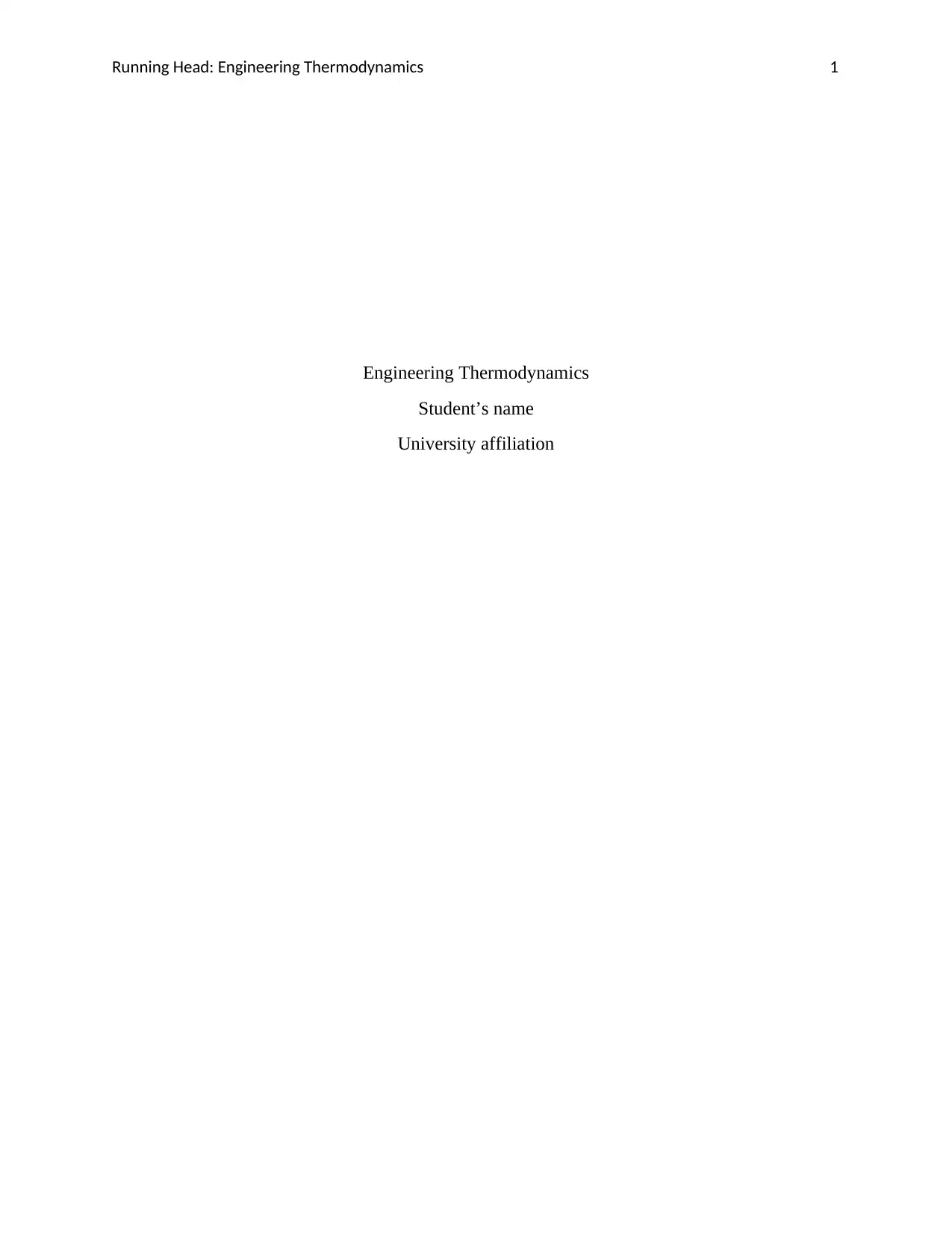
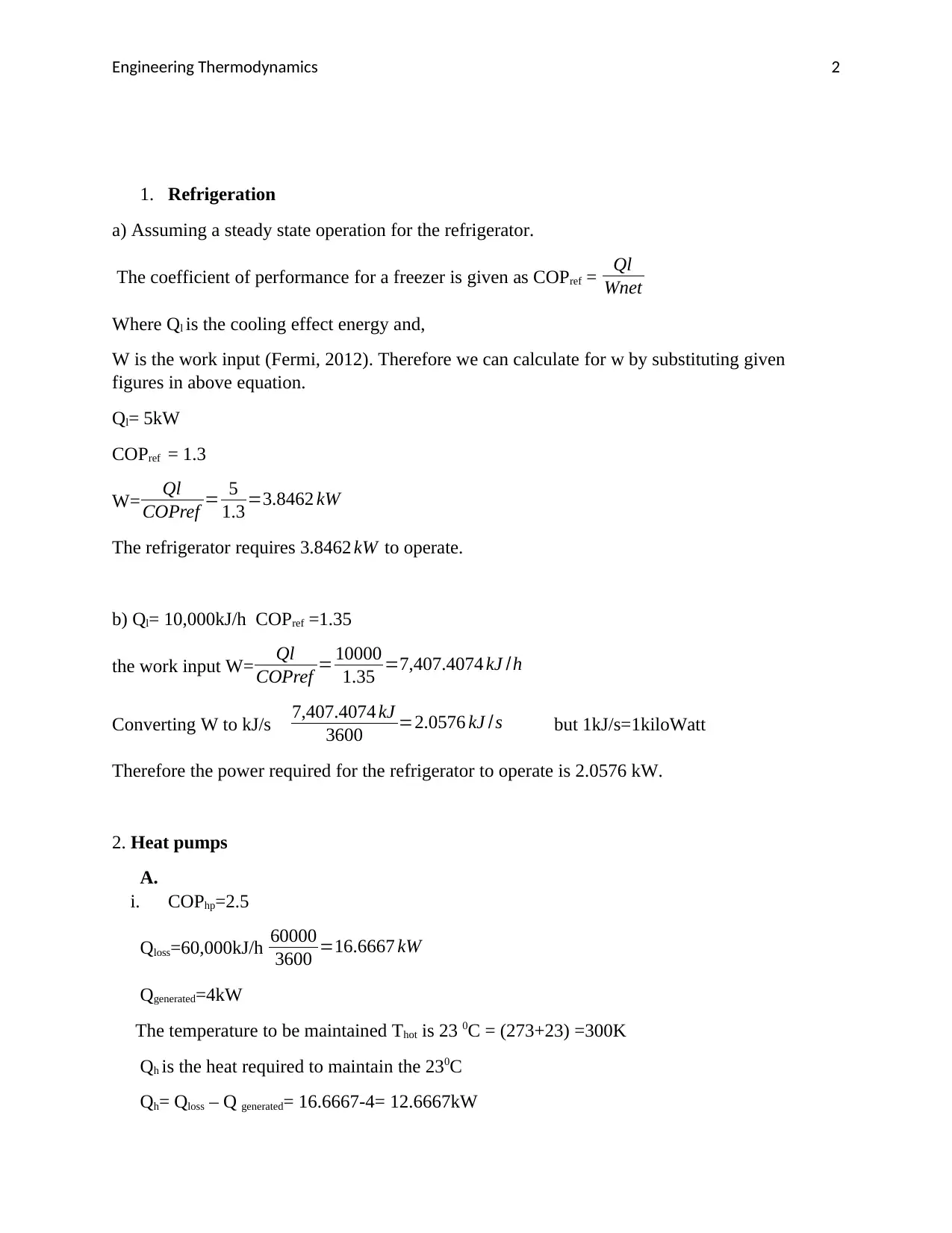
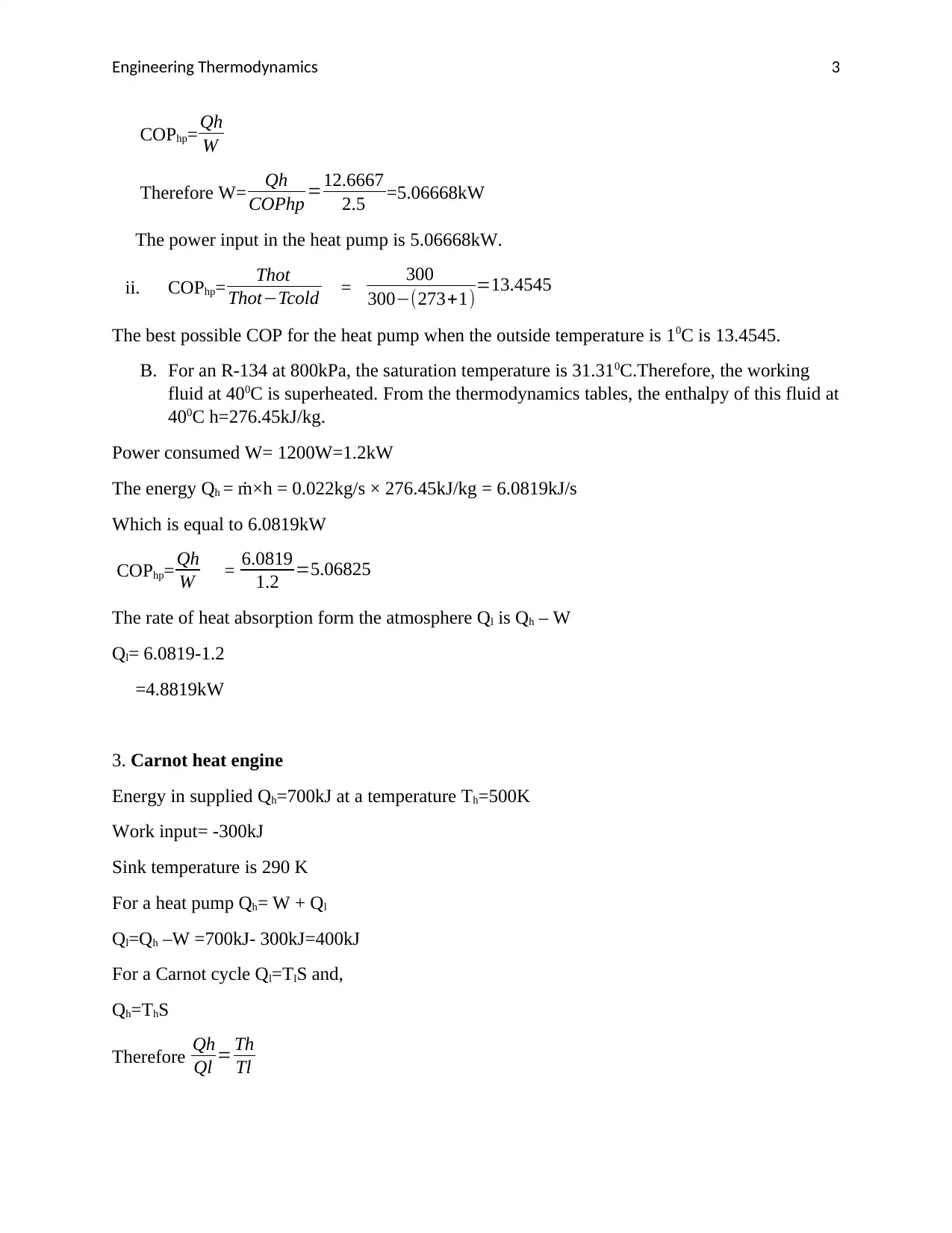

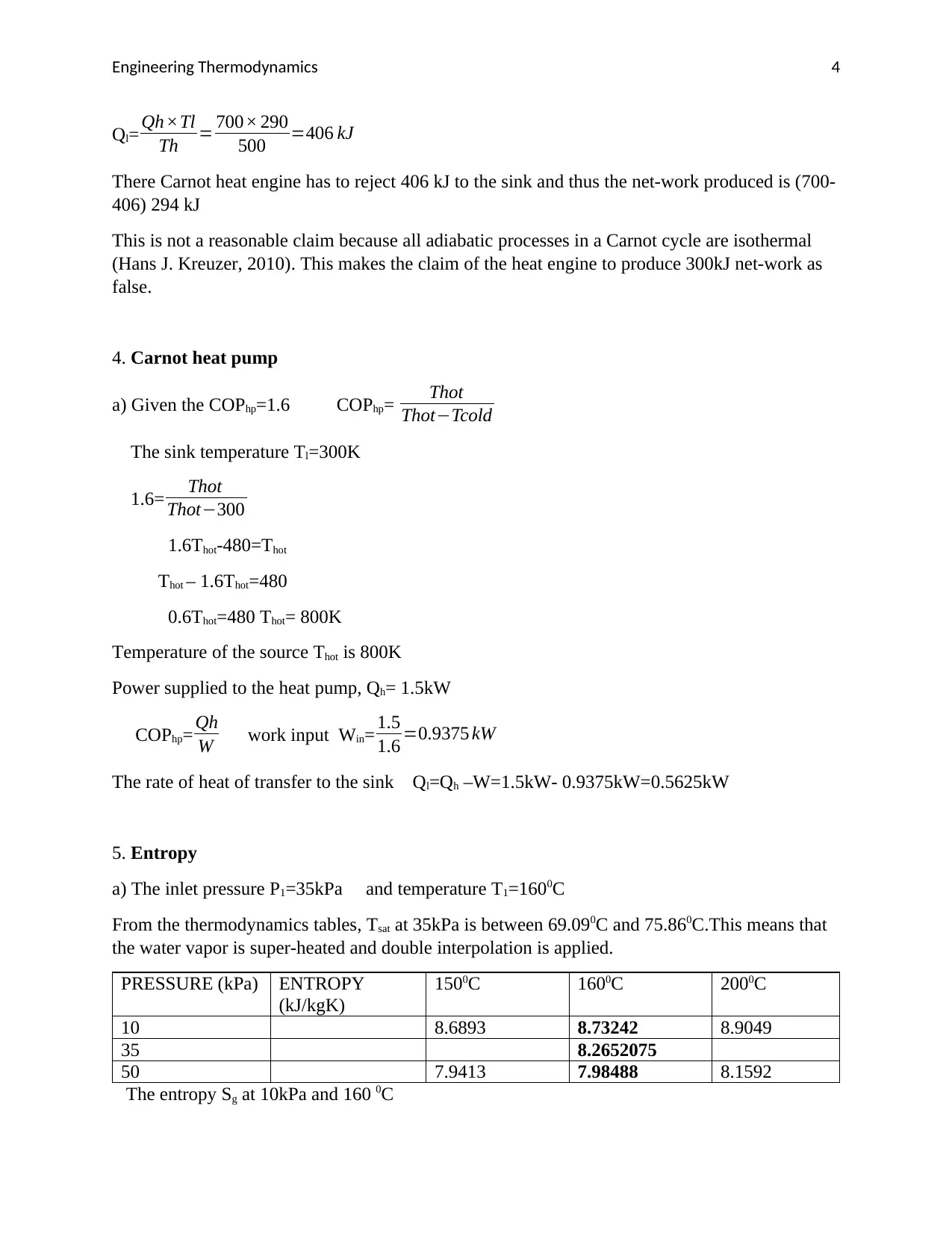
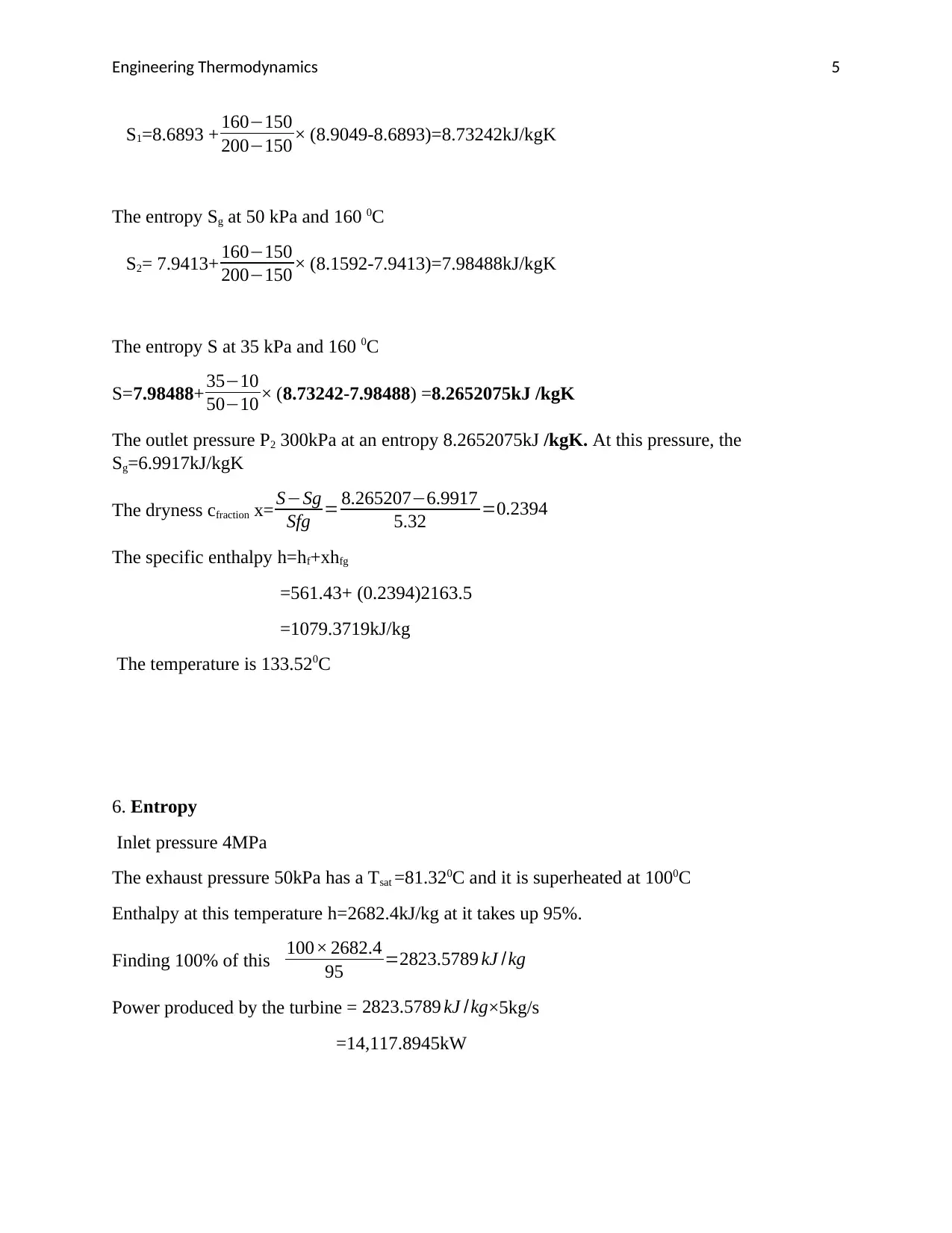
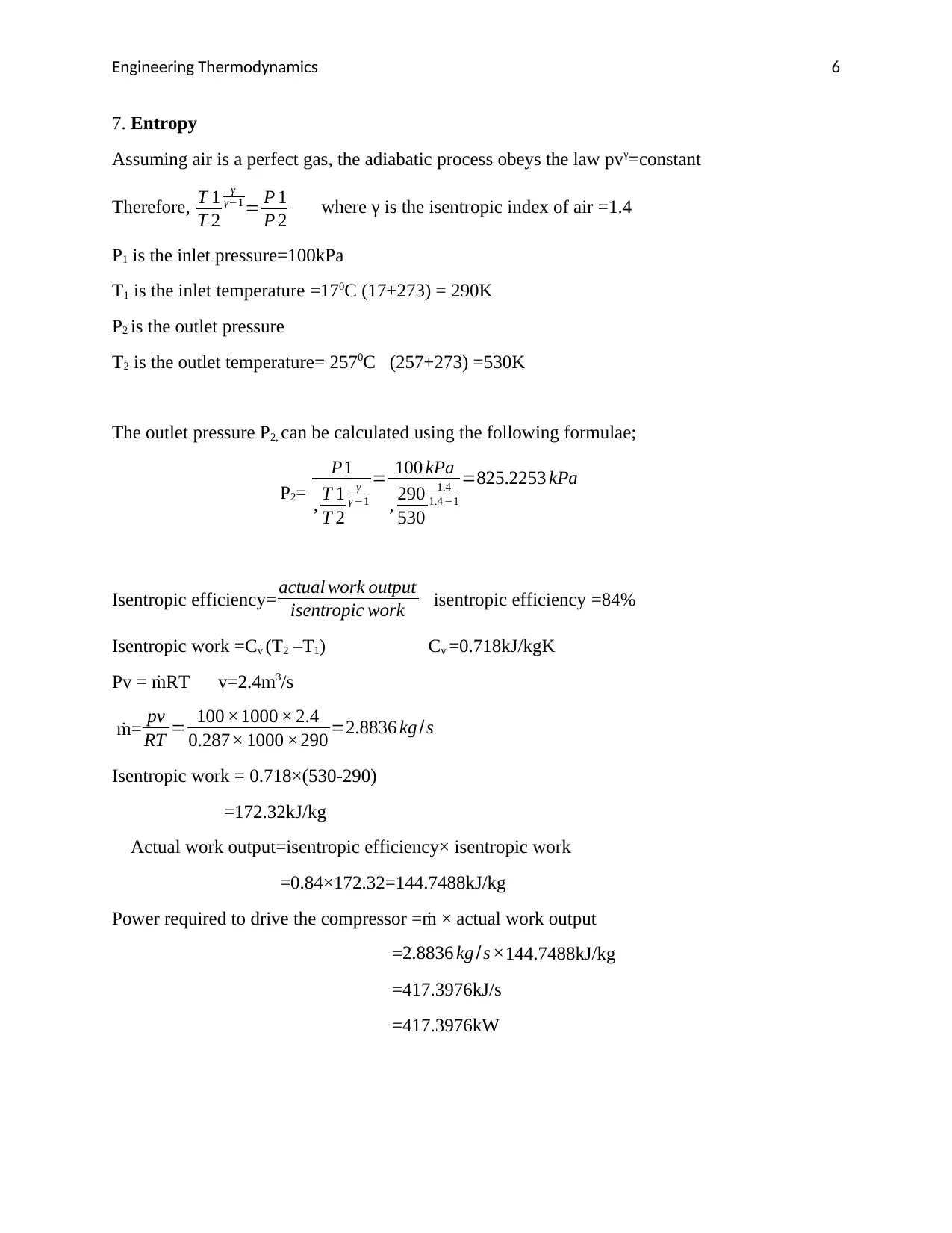



![[object Object]](/_next/static/media/star-bottom.7253800d.svg)